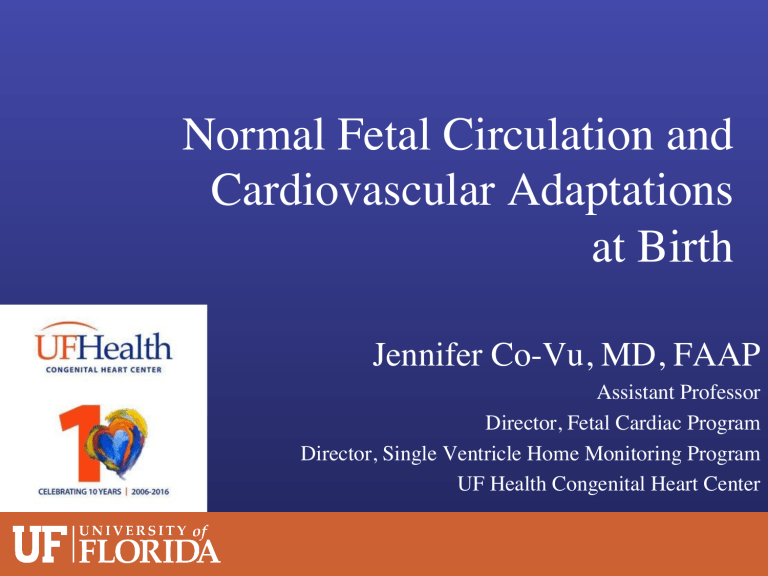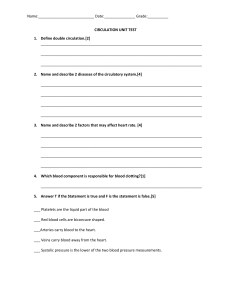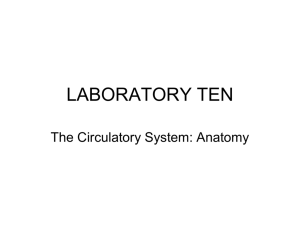
Normal Fetal Circulation and Cardiovascular Adaptations at Birth Jennifer Co-Vu, MD, FAAP Assistant Professor Director, Fetal Cardiac Program Director, Single Ventricle Home Monitoring Program UF Health Congenital Heart Center Objectives • Discuss fetal anatomy • Discuss the fetal circulation – Course of the circulation – Admixture of oxygenated and systemic venous blood – Fetal vascular pressures – Blood gases and oxygen saturation – Cardiac output and its distribution • Birth associated changes in circulation Objectives • Discuss specific fetal circulation and transitional circulation in different congenital heart disease states – – – – – – – Coarctation of the aorta Hypoplastic left heart syndrome Tricuspid atresia Tetralogy of Fallot Transposition of Great Arteries Total anomalous pulmonary venous return Truncus arteriosus Fetal Circulation Fetal Circulation 3 Unique fetal cardiovascular structures Ductus arteriosus Foramen Ovale Ductus venosus IVC Percentages of combined ventricular output 450 ml/kg/min Transitional Circulation Transitional circulation • Mechanical expansion of the lungs • Increase arterial PO2 • Rapid decrease in PVR • Removal of placenta • Removal of low-resistance circulation • Increase in SVR Transitional Circulation • Entire RV output flows to pulmonary circulation • PVR < SVR • Shunt through PDA reverses and becomes left to right. • In the course of a few days the PDA constricts (>PO2) • Remnant of PDA = Ligamentum arteriosus • Increase of Pulmonary vein flow to LA increases pressure • Pressure sufficiently closes the PFO functionally. Transitional Circulation • Removal of placenta = closure of the ductus venosus. – Remnant of ductus venosus = Ligamentum venosum • LV now high resistance systemic circulation – Wall thickness and mass increases • RV now low resistance pulmonary circulation – Wall thickness and mass decrease. Neonatal Circulation Neonatal Circulation • Heart rate slows as a result of baroreceptor response to increase SVR. • Blood pressure progressively rises with increasing age • PVR markedly decreased – Major decline achieved to low adult levels from 2-3 days up to 7 days or a few months Neonatal Circulation • Foramen ovale functionally closed by 3 mos. – Some close by 2 years – 25% of population has it patent in adulthood • PDA functionally closed within 10-15 hours – Longer in CHD and preemies – Average time 3-5 days Fetal and Transitional Circulation in Different Congenital Heart Disease States Coarctation of the aorta Hypoplastic Left Heart Syndrome Tricuspid Atresia Tetralogy of Fallot The boot shaped heart? Transposition of Great Arteries The egg on a string? Total Anomalous Pulmonary Venous Return TAPVR Types Snowman Sign? Truncus arteriosus Types of Truncus Arteriosus Thank You!


